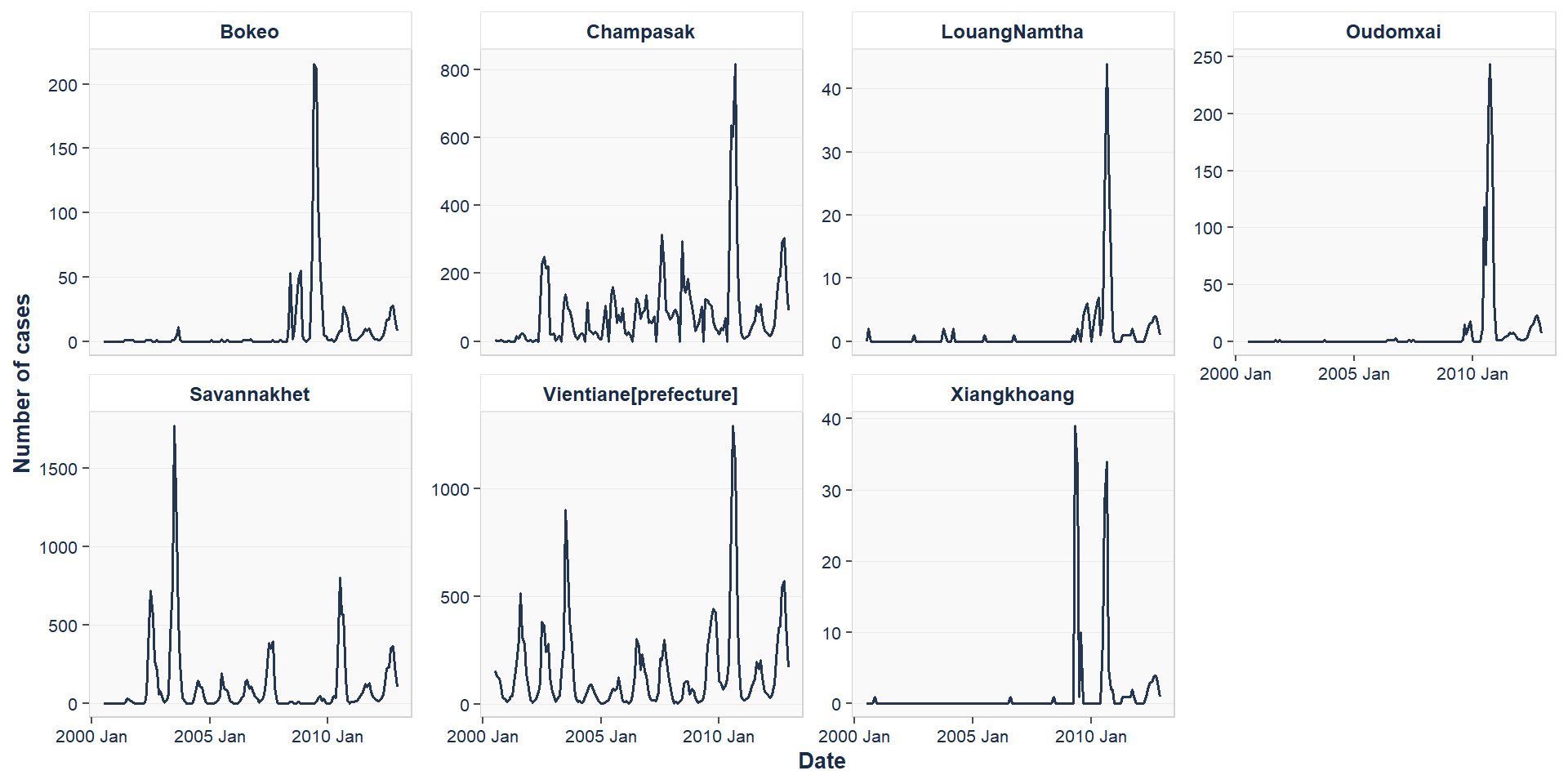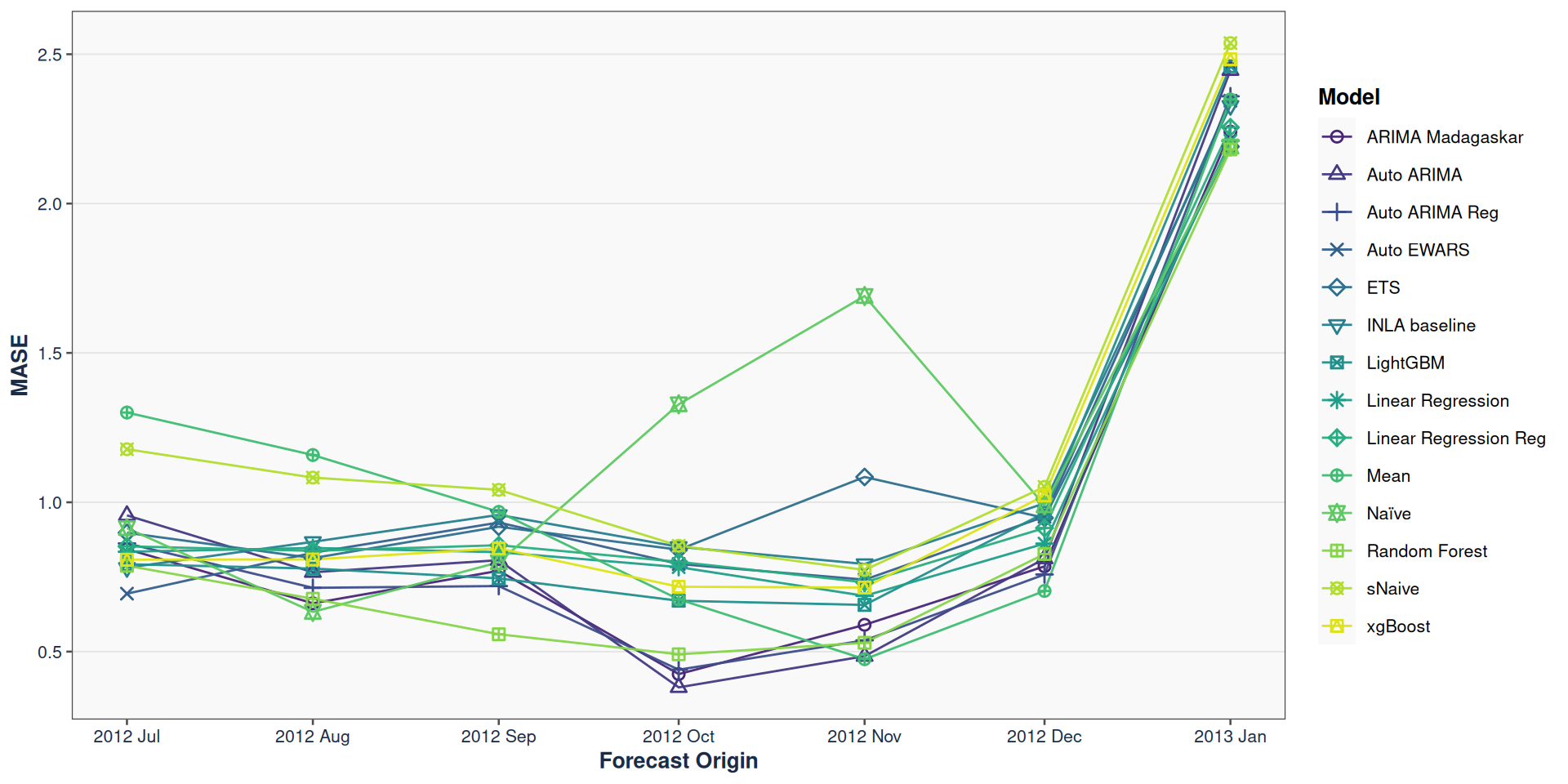



From Cases to Consumption
Evaluating CHAP/DHIS2 Model Portability for Health Supply Chains
Data Lab for Social Good, Cardiff University in collaboration with HISP Centre, University of Oslo
2025/10/29

Outline
Background
The fundamental question
What we are going to do
Our current plan
Initial results
What NEXT?
BACKGROUND

The Problem: A tale of two data streams
Health supply chains are struggling with forecasting at sub-national/ facility level.
Operational realities: Incomplete records, irregular orders, frequent manual adjustments.
This masks true demand and leads to a cycle of…
Persistent, critical stockouts 📉.
But… we have a success story.
Platforms like DHIS2 and CHAP have robust, high-performing models for forecasting disease cases (morbidity).
The fundemental question
✅ We’re good at forecasting cases (e.g., malaria).
❌ We’re struggling with forecasting consumption (e.g., antimalarials).
Can we leverage the CHAP/DHIS2 morbidity models to forecast product consumption in supply chains?
The challenge: Why isn’t this easy?
Case data and consumption data are different.
Different Data Structures
Consumption data is “messier”.
- Missing entries (e.g., “0” = no consumption, or “0” = data not entered?)
- Intermittency (infrequent demand).
- Inconsistent recording.
Different Metadata
Consumption is affected by logistics.
- Lead times.
- Procurement cycles.
- Existing stock levels and stockouts.
OUR APPROACH

Our research questions
To solve this, we are investigating three key questions:
Portability: When can we transfer a model? (Morbidity \(\rightarrow\) Consumption? One product \(\rightarrow\) Another?)
Decision Translation: How do we turn a statistical forecast into a better inventory order? (Forecast \(\rightarrow\) Action)
Hierarchical Coherence: Do site-level forecasts reliably add up for district and national planning?
What we are going to do

We’ve organized our work into three interconnected Work Packages (WPs).
WP1: Portability (Test reuse/transfer. Create “if/then” rules.)
\(\downarrow\)
WP2: Forecast \(\rightarrow\) Inventory (Translate forecasts into real-world inventory policy.)
\(\downarrow\)
WP3: Hierarchical Coherence (Test aggregation for national procurement.)
Our current plan
Our immediate focus is on WP1 (Portability) and linking to WP2 (Inventory Simulation).
INITIAL FINDINGS
Forecasting using morbidity data.
Data exploration
We used number of dengue cases in Laos to test the forecasting models.

Figure 1: Monthly dengue cases by location.
Ovreall forecast performance
Best values in each column are highlighted in bold.
| Model | MASE | Quantile Loss (q10) | Quantile Loss (q50) | Quantile Loss (q90) |
|---|---|---|---|---|
| Random Forest | 0.864 | 107.360 | 383.058 | 607.857 |
| ARIMA Madagaskar | 0.902 | 165.565 | 360.123 | 310.765 |
| Auto ARIMA Reg | 0.913 | 173.929 | 367.735 | 322.289 |
| Auto ARIMA | 0.950 | 176.069 | 376.163 | 309.962 |
| Linear Regression | 1.008 | 129.647 | 416.129 | 278.839 |
| LightGBM | 1.009 | 96.771 | 452.020 | 752.016 |
| Linear Regression Reg | 1.035 | 127.927 | 391.573 | 284.118 |
| Auto EWARS | 1.041 | 125.371 | 421.408 | 296.665 |
| xgBoost | 1.057 | 103.980 | 485.837 | 817.878 |
| INLA baseline | 1.082 | 126.139 | 432.163 | 239.886 |
| Mean | 1.090 | 138.155 | 461.150 | 347.705 |
| ETS | 1.099 | 124.722 | 428.761 | 299.443 |
| sNaive | 1.217 | 138.155 | 510.311 | 276.443 |
| Naïve | 1.221 | 143.645 | 506.282 | 319.259 |
Ovreall point forecast performance across forecast origins

Figure 2: Overall MASE accross forecast origins
Ovreall point forecast performance across each location

Figure 3: Overall MASE accross forecast origins for each location.
WHAT NEXT

Way forward
Leverage CHAP/DHIS2 based models for supply chain data.
Evaluate forecast perfromance based on time series structure, region and across products.
Run order up-to-level based inventory simulations.
Evaluate how forecast performance translate into inventory decisions.

Key takeaways
The Idea: Reusing morbidity models for supply chains is a promising but non-trivial opportunity.
Our Contribution: We’re building an evidence-based, practical guide for when and how to repurpose morbidity models for consumption forecasting, leveraging CHAP’s modelling infrastructure and DHIS2-linked data.
The Impact: By aligning forecasts with operational decisions, this work aims to improve stock availability, and inform sourcing/procurement decisions.
Compatibility: CHAP/DHIS2’s external model interface makes it possible to integrate these forecasting tools seamlessly, no new platform required.
Any questions or thoughts? 💬
